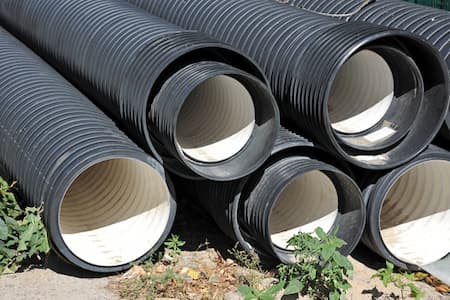Cost Myths About CIPP: What the Numbers Really Say

Budget considerations often determine whether a sewer rehabilitation project moves forward. For many municipalities, the perceived cost of cured-in-place pipe (CIPP) is a sticking point. While some decision-makers worry that trenchless methods are too expensive upfront, a closer look at the numbers tells a different story. In fact, CIPP is frequently the most cost-effective solution when lifecycle costs and soft savings are taken into account.
The True Lifecycle Costs of CIPP vs. Open-Cut Replacement
When comparing CIPP to open-cut replacement, initial bids may appear similar. The difference becomes clear when factoring in the hidden costs of excavation. Open-cut work often requires road closures, asphalt replacement, heavy equipment mobilization, and extended labor. These expenses quickly add up and can exceed the apparent savings of a lower bid.
CIPP requires minimal surface disruption, which means no major excavation and far less restoration. Crews can line hundreds of feet of pipe in a single day, rehabilitating sewer systems without tearing up streets, sidewalks, or landscaping. This reduction in surface restoration alone can save municipalities thousands per project and help stretch capital improvement budgets further.
The Value of Soft Cost Savings
Hard costs are only one side of the equation. Soft costs, while harder to quantify, have a major impact on community satisfaction and project ROI. Projects using CIPP generally require shorter construction timelines, leading to fewer traffic detours and business disruptions. Residents face less noise, less dust, and fewer interruptions to their daily routines.
Fewer complaints and reduced public frustration also benefit municipal staff. When calls about blocked driveways and road closures decrease, city employees can focus on other priorities. CIPP also carries lower safety risks since crews spend less time in open trenches and heavy equipment zones, reducing potential liability for municipalities.
Funding Opportunities for Trenchless Technology
Another often-overlooked benefit is the ability to access special funding. CIPP projects can qualify for green infrastructure grants because they prevent leaks, protect groundwater, and extend the life of existing assets. State revolving funds, federal infrastructure programs, and sustainability incentives can help offset costs and make projects more affordable.
An expert plumber in Greenwood familiar with municipal systems can also assist with identifying funding sources and navigating the application process. These additional resources can make trenchless rehabilitation even more cost-effective.
Tips for Writing Bid Specs That Maximize ROI
Cities can further enhance savings by writing bid specifications that clearly outline quality standards and performance goals. Well-crafted specs encourage competitive bidding while ensuring that contractors deliver high-quality installations that meet design requirements. Municipalities should specify resin types, curing methods, and structural performance criteria that align with long-term objectives, preventing premature failures and rework.
It’s also wise to include language that requires contractors to submit post-installation inspection data, such as video footage and testing results. These measures help verify quality and protect the city’s investment, ensuring that CIPP provides its full expected service life.
When municipalities look past upfront costs and consider the complete financial picture, cured-in-place pipe (CIPP) emerges as a clear winner. To see how this trenchless technology can benefit Greenwood’s infrastructure projects, contact Mathis Plumbing & Heating Co., Inc. today.
